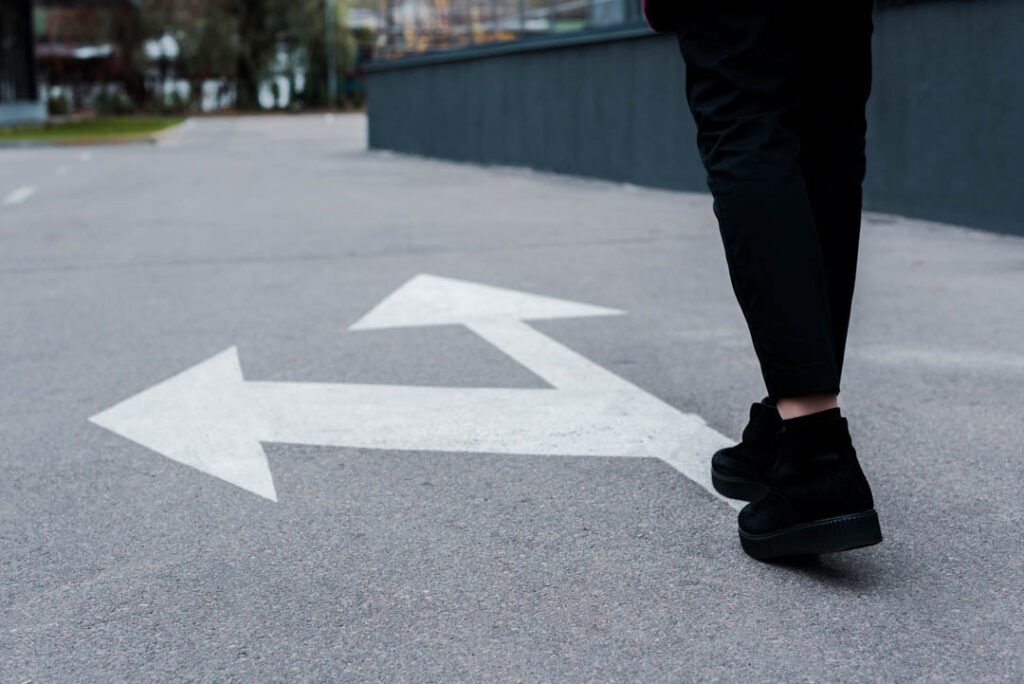If you’ve ever committed to developing more effective habits and then abandoned those resolutions within weeks—or even days—you’re not alone. Many of us would love to be healthier, get more organized, or stop procrastinating. So why is it so hard to change our habits?
Contrary to what we might expect, teeth-gritting and white-knuckling our way to changing our behavior isn’t effective. In an MMA showdown between willpower and deeply ingrained rituals, habits tend to win. That’s because we often lack the support system we need to create and maintain change. We are wired to prefer what’s easy and familiar, even if those behaviors are detrimental to our well-being or success. And when we get off track with a new positive habit, it’s common to let disappointment or guilt take over, ending our commitment to change before we can enjoy our progress.
But don’t lose heart! It is possible to change our habits so we can achieve our goals. By following a few guidelines, we can create a system that sets us up for consistency, accountability, and ultimately, success. Let’s explore how.
Inventory those habits—the good, the bad, and the missing
Before we commit to transforming our habits, we first need to identify who we want to become. According to James Clear, author of Atomic Habits, we tend to think about habits as achieving specific outcomes, such as “I want to learn Portuguese” or “I want to read 30 books this year.” However, we’ll more likely accomplish long-term change if we instead strive for a specific identity: “I want to become a person who speaks Portuguese” or “I want to be the kind of person who reads each night before bed.”
Once we’ve identified who we want to be, we need to list our current habits. We’ll divide them into (1) those that serve our goals and (2) those that impede our progress. Finally, we need to determine which new habits could be added to the mix so that we can achieve our objectives. We might plot out your goals and habits like this:
Gettin’ picky
It’s OK if our list of habits runs long because the next step is to prioritize. Trying to break multiple bad habits while adding a plethora of new positive practices is a bit too much to take on all at once. So let’s choose just one or two habits to start. We might select the ones that are easiest, seem most enjoyable, or might have the biggest impact. For example, if our goal is to become a healthier person, we could start by eliminating two of the processed foods in our diet and walking 10 minutes a day. If our goal is to be someone who studies effectively, we could start devoting 30 minutes every weekday evening to homework.
Whichever habits we focus on, we’re going to experiment and tweak as we move forward. So we’ll need to keep our longer list because we’ll be coming back to it as we build better habits.
Small is the new big
A great piece of advice for any goal or task is to start small. Incremental changes in our routine might seem insignificant, but they will ultimately lead to big results. Smaller habit changes are also easier to stick with. For example, spending five minutes each morning to write down our goals is a mini-version of in-depth journaling. Cutting 25 calories a day is easier than cutting 250. We can then scale up day by day or week by week and build momentum from our tiny triumphs. Ultimately, we need to create a foundation before we can build on it. And small changes are a terrific way to establish better habits that actually last.
Right on cue
Let’s think about the habits we already practice. When and where do those habits take place? How do we normally feel? Who is around us at the time, if anyone? What happens right before we engage in that habit?
The answers to these questions can tell us about our cues, says Charles Duhigg, author of The Power of Habit. Cues are the settings, emotions, people, and/or events that trigger our habits. For example, when we wake up in the morning, we might automatically make coffee or tea. Commuting to work might cue us to turn on a podcast.
You can set regular notifications on your phone or laptop to remind you to engage in positive habits you're trying to build.
To build positive habits, we need to make our cues obvious. To break ineffective habits, we’ll need to put our cues out of sight and mind. For example, if we want to become the kind of people who study effectively, we might put our books, notes, and other study materials where we will see them. But if we know we get easily distracted, we’ll also want to put our phones and other tempting diversions away. If we want to be healthier, we could put a water bottle on our kitchen counter each night to fill up before work the next day.
Make it enjoyable
New habits are easier to maintain when they’re fun. That might mean turning on music when we’re studying or exercising. Or we might schedule homework with friends or turn household chores into a family competition.
If it’s too difficult trying to make a new habit fun, however, we can always try habit stacking: associating a less-fun new habit with something we already enjoy doing. We might add meal-planning to an already-established weekly treat at the coffee shop, for example. Or we could immediately follow reading to our kids with 45 minutes of undisturbed studying.
The more attractive the habit, the more likely you’ll make it part of your regular routine.
Easy does it
Keeping positive habits convenient and making ineffective habits difficult are crucial for changing our behavior for the better.
For those who want to become regular morning exercisers, a commonly shared tip is to set out workout clothes the night before. To be better note-takers in class, we could keep our bag stocked with our laptop and favorite stationery (i.e., notebooks, pens, etc.). To practice better sleep habits, we might set a daily alarm to turn off screens and start our bedtime ritual. To deter late-night snacking, we might put chips or cookies in a lockbox—or just never buy them to begin with. And to reduce our time on social media, we could delete the apps from our phone.
The idea is to create an environment that’s conducive to our habit. This will make our own willpower less of a factor in our habit-building success.
Get that satisfaction
Generally, the gratifications of bad habits, such as eating junk food, living on caffeine, or procrastinating, are immediate: cookies and cake taste delicious, coffee and soda perk us up, and who doesn’t want to indulge in fun things instead of the things we don’t want to do? Meanwhile, the rewards of good habits are long term. It takes weeks to months for our waistlines and bloodwork to register the benefits of a healthy diet and exercise. And when we save money from each paycheck, it can be months to decades before we reap any financial rewards.
Our human preference for instant gratification makes bad habits hard to break and good habits easy to abandon. So how do we override that evolutionary programming? We introduce more immediate rewards for positive habits, and we make the outcomes of bad habits unsatisfying.
When we study or exercise, for example, we could reward ourselves with a few moments of self-care. Announcing our habits can also make us feel more accountable. If we share on social media that we read a certain number of pages per day or worked out three times this week, the positive social reinforcement we get can inspire us to continue our habits. Posting that we’ve procrastinated or sharing a photo of a disorganized space can introduce embarrassment or shame. That, in turn, can motivate us to do better.
Knowing that we will be checking in regularly with our accountability partners can keep us honest and striving for positive change.
Consistency with flexibility is the winning combo
According to psychologist Wendy Wood, author of Good Habits, Bad Habits, consistency is key to building better habits, but so is flexibility. Life occasionally but inevitably disrupts our ability to carry out some of our daily routines. However, if we had an emotionally exhausting day and don’t brush our teeth before bed that night, that doesn’t mean we just stop brushing our teeth forever; we just start again the next day. Similarly, if we aren’t able to study, meditate, or exercise during our designated time, we simply do it later that day or during the scheduled time the following day. Habit building is about process, not perfection, so as long as we’re getting back on track, we’re making progress.
Tracking and tweaking our habits
Keeping a habit journal or using a habit-tracking app can help us reflect on what’s working and what’s not as we change our behaviors. We may need to change our approach, such as how we cue or stack our habits. Or we may need to revisit the habit inventory we started with and switch the habits we’re pursuing.
Habit building is a process of trial and error, success and adaptation. So when new habits don’t seem to take or don’t serve us, we need to adjust or replace them so that we continue to move toward who we want to become.
Changing our habits, changing ourselves
Building positive habits and breaking die-hard habits that have waylaid us in the past aren’t quick fixes; they require long-term behavioral change. They also may require some attitude adjustment: we have to think about habit building as an opportunity rather than an obligation. The idea is to habituate: to make these practices automatic rather than something we have to consciously think about doing again and again. That’s why it’s best to start small, stay consistent but flexible, and have an effective support system. The process can be challenging, but the outcomes are nothing short of life changing because we become the people we want to be.
Want help identifying and practicing better habits?
ReUp coaches can help you evaluate your current habits and create a personalized action plan for success. Your support team is available by phone, text, or email. Ready to get started?







